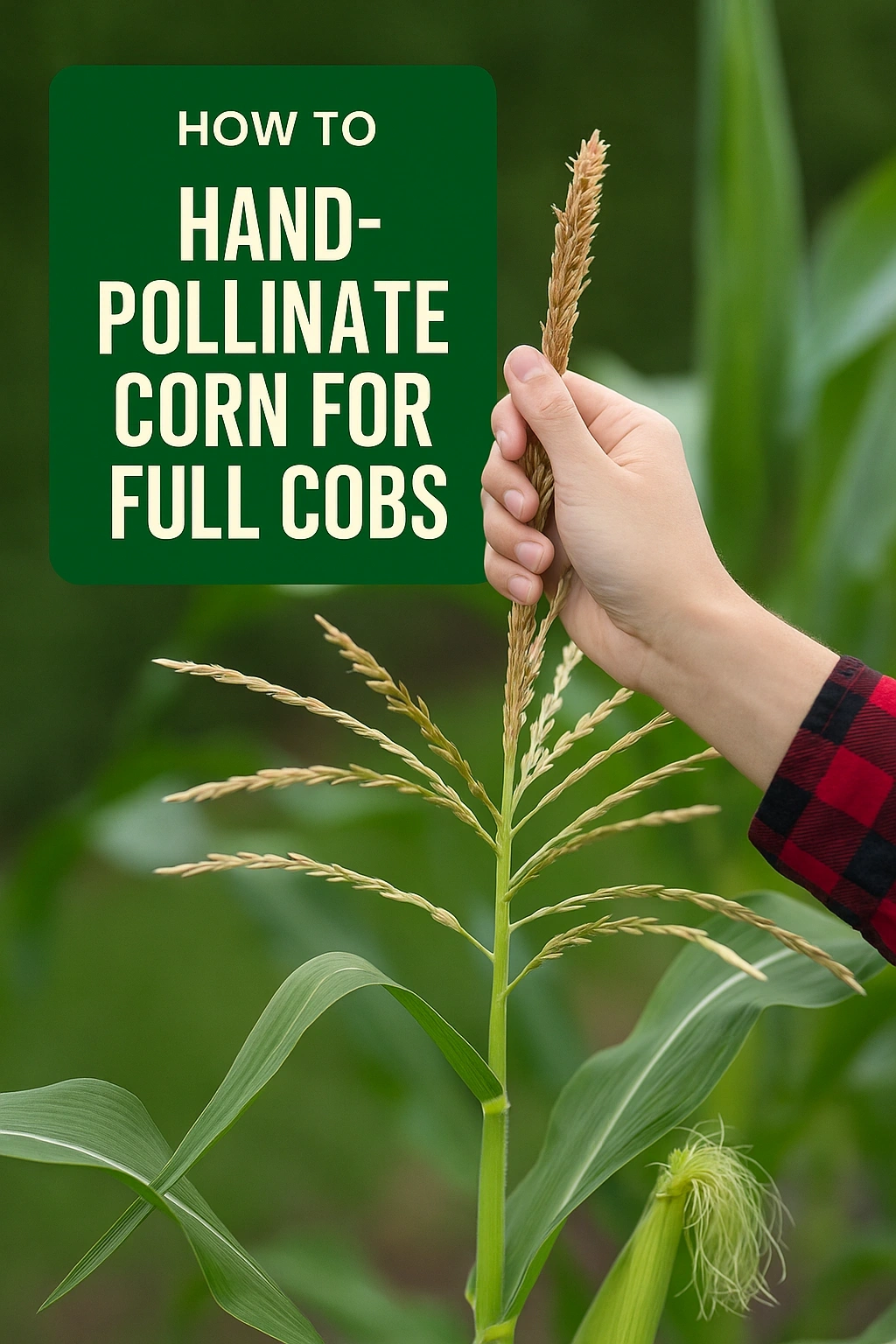
Corn is a staple crop that thrives in various climates, but achieving full cobs requires proper pollination. Hand pollination can significantly enhance yields, especially in areas where wind or insect pollinators may be lacking. In this article, we will explore the techniques and timing for hand pollinating corn, ensuring that your plants produce robust, full cobs. Whether you’re a home gardener or a seasoned farmer, mastering this technique can lead to abundant harvests.
The Basics of Corn Reproduction
Corn plants reproduce through a process known as pollination, which involves transferring pollen from the tassels (male flowers) to the silks (female flowers). Each silk corresponds to a kernel on the cob, so effective pollination is crucial for maximizing your yield. Understanding the corn plant’s reproductive cycle is essential for successful hand pollination.
When to Hand Pollinate Corn
Timing is critical in the pollination process. Corn typically begins to tassel about 55 to 75 days after planting, depending on the variety. The ideal time for hand pollination is when the tassels are shedding pollen and the silks are just starting to emerge. This window usually lasts for a few days, making it essential to monitor your plants closely.
Identifying the Right Time
To determine the right moment for hand pollination, observe the tassels as they begin to turn brown and release pollen. Concurrently, check the silks for lengthening; they should be moist and sticky when ready to receive pollen. Pollination is most effective when both parts are active simultaneously.
Preparing for Hand Pollination
Before you begin the hand pollination process, gather the necessary tools. You will need a small container to collect pollen, a soft brush or cotton swab, and perhaps a pair of gloves for hygiene. Ensuring you have the right equipment will make the process smoother and more efficient.
Collecting Pollen
To collect pollen, gently shake the tassels over the container. You can also use the brush or cotton swab to gather pollen directly from the tassels. It’s best to collect pollen in the morning when the air is still and the pollen is most abundant. Store the collected pollen in a cool, dry place until you are ready to use it.
How to Hand Pollinate
Hand pollination is a straightforward process once you have collected the pollen. Using your soft brush or cotton swab, gently touch the silks on each ear of corn. Carefully transfer the pollen from the brush to the silks, ensuring that each silk receives a sufficient amount. This method will help to fertilize the kernels, leading to fuller cobs.
Technique Tips
When applying pollen, be gentle yet thorough. Each silk should have contact with the pollen to maximize fertilization. Pollinate in the early morning or late afternoon when temperatures are cooler, as this helps to reduce pollen loss due to heat. In windy conditions, consider using a small bag to cover the ears after pollination to protect them.
Factors Influencing Pollination Success
Several factors can affect the success of hand pollination. Weather conditions, plant health, and timing all play significant roles. High temperatures, drought, or excessive moisture can impede pollination. Additionally, ensuring that your corn plants are healthy and well-nourished will enhance their ability to produce full cobs.
Environmental Considerations
Monitor the local weather conditions leading up to and during the pollination period. If rain is forecasted, you may want to pollinate before the rain to prevent pollen from washing away. Also, be vigilant about pests and diseases that can weaken your plants and reduce their productivity.
Post-Pollination Care
After hand pollination, it’s essential to provide the right care to ensure kernel development. Water your corn plants adequately, especially during dry spells, and consider using a balanced fertilizer to support growth. Regularly check for signs of pests or diseases and address any issues promptly.
Monitoring Progress
As the cobs develop, keep an eye on their growth. The kernels should begin to swell as they are fertilized. If you notice any abnormalities or stunted growth, it may be an indication of inadequate pollination or other environmental stressors. Take note of these issues to improve your methods in future growing seasons.
Common Challenges in Hand Pollination
Despite your best efforts, challenges may arise during hand pollination. Poor weather, insufficient pollen, or lack of synchronization between tassels and silks can hinder success. Understanding these challenges will help you adapt your approach and enhance your results in subsequent years.
Solutions to Common Issues
If you experience low pollen production, consider planting multiple corn varieties that mature at different times to ensure overlapping pollination periods. Additionally, if weather conditions are unfavorable, use a fan or gentle breeze to assist in pollen distribution. Adapting your strategy will improve your chances of success.
FAQs About Hand Pollinating Corn
What is the best time of day to hand pollinate corn?
The best time to hand pollinate corn is in the early morning or late afternoon when temperatures are cooler, and pollen is most abundant.
How can I tell if my corn has been successfully pollinated?
Successful pollination can be indicated by the swelling of the kernels on the cob and the silks turning brown and drying out over time.
Can I hand pollinate corn in adverse weather conditions?
While hand pollination is best done in favorable weather, if conditions are adverse, consider using protective measures like covering the ears after pollination.
Is hand pollination necessary for all corn varieties?
Not all corn varieties require hand pollination, but it can be beneficial in areas where natural pollinators are scarce or for improving yields.
What should I do if I notice poor kernel development?
If you notice poor kernel development, check for environmental stressors, ensure adequate water and nutrients, and evaluate your pollination timing.
